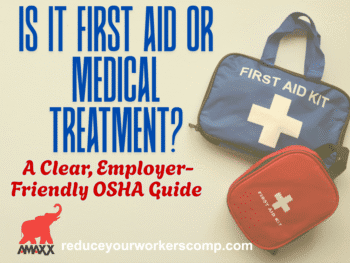
Each method provides unique advantages for both employers and insurers to control costs, ensure appropriate treatment, and reduce claim durations.
-
Utilization Review (UR)
Utilization Review (UR) is a critical process in workers’ compensation that involves a medical review of specific services provided to injured employees. The goal is to ensure that the treatment is necessary and appropriate, identifying any potentially questionable treatment plans or non-compensable body parts being grouped together with compensable ones.
UR begins with nurses who use established medical guidelines to approve or deny treatment. If a treatment plan falls outside of these guidelines, it is referred to a peer review physician with the same specialty as the treating physician. This ensures that treatment decisions are based on informed medical perspectives.
Types of Peer Review:
- Prospective Review: Conducted before treatment begins to determine whether it should be authorized. This review helps prevent unnecessary treatments and associated costs.
- Concurrent Review: Performed during ongoing treatment, often when additional services are requested after an initial treatment plan has been completed.
- Retrospective Review: Occurs after services have been provided but before payment is authorized, ensuring the treatment was necessary.
UR encompasses a broad range of medical services, including surgery, physical therapy, pharmacy management, and interdisciplinary pain management. To maintain compliance, organizations offering these services must be URAC certified, a certification that upholds rigorous standards in healthcare quality.
Fee Range: UR typically costs between $100 and $350 depending on specialty and location.
-
Physician Case Review
Physician Case Review evaluates the entire medical case rather than just specific procedures. A board-certified physician reviews whether the injured worker is receiving the best possible care for their injury and identifies areas where the treating physician may lack knowledge or deviate from standard medical care.
Click Link to Access Free PDF Download
“The 6-Step Process To Determine Workers’ Comp Injury Causation”
These reviews are instrumental in situations where:
- The employee is receiving treatment but shows no improvement.
- Diagnosis and prognosis remain unclear, or the disability period is disproportionate to the injury.
- There are conflicting opinions among treating physicians.
A physician case review helps prevent unnecessary treatments, reducing both medical and indemnity costs by ensuring timely recovery and return to work.
Fee Range: Physician case reviews are billed at $200 to $500 per hour depending on specialty and location.
Causation Review is vital when there is a discrepancy between the reported injury mechanism and the resulting complaints. These discrepancies can lead to unnecessary claims if not identified and addressed by a qualified medical professional.
For example, a teacher who bent over to pick up a backpack and claimed upper back pain might raise red flags because thoracic strains are uncommon in such situations. When red flags like inconsistent reports or difficulty contacting the claimant arise, a causation review can help identify potential system abuse.
This review helps to clarify if the injury is work-related and should be covered by workers’ compensation or if there are other contributing factors that need to be addressed.
-
Medical Advisors and Medical Directors
Medical Advisors and Medical Directors play a significant role in overseeing claims, acting as either internal physicians (Medical Directors) or contracted physicians (Medical Advisors). These professionals review claims, clarify medical information with treating doctors, and participate in claim reviews to offer insights on injury severity and recovery timelines.
Medical Advisors are especially useful when:
- There are numerous injuries or prolonged periods of disability among employees.
- Assistance is needed to prepare for physician depositions.
- A doctor’s opinion is required regarding return-to-work options or pre-existing conditions.
An example of the importance of Medical Advisors comes from a case where an employee reported symptoms weeks after inhaling smoke from a burning engine. A medical review by an occupational physician indicated that such symptoms typically appear within 24-48 hours, not weeks later. A timely review could have prevented an unnecessary claim.
Fee Range: Medical Advisors typically charge $200 to $500 per hour. Full-time Medical Directors are salaried, while part-time directors are usually paid hourly.
Independent Medical Examination (IME)
An Independent Medical Examination (IME) involves an external physician examining the injured worker and reviewing their medical records. IMEs are used to document the medical condition of the worker and ensure the treatment aligns with the injury sustained. These physicians are independent and well-versed in workers’ compensation procedures.
While IMEs can be costly, with fees ranging from $350 to $1,800 depending on the state and specialty, they provide a valuable tool when deeper scrutiny is required for complex claims, such as those involving legal action or impairment ratings.
However, IMEs are sometimes overused. In many cases, a Peer Review can provide similar insights at a much lower cost. The peer review process is quicker and often more appropriate when dealing with routine claims or when confirming whether an injury is work-related.
When to Request a Peer Review:
- There is doubt about the work-related nature of the injury.
- The employee is not recovering within standard medical timeframes.
- A medical opinion is needed to validate a claim.
When to Request an IME:
- Legal action is anticipated, and the IME physician may need to testify.
- An impairment rating is required before settlement negotiations.
- State regulations mandate an IME for certain types of claims.
To ensure an effective IME, employers should provide the physician with comprehensive medical records and ask specific questions through a customized cover letter. Proper timing is also essential to avoid unnecessary delays.
Conclusion
Medical cost containment strategies in workers’ compensation, such as Utilization Review, Physician Case Review, Causation Review, Medical Advisors, and IMEs, are invaluable for managing claims effectively. Each method serves a unique purpose in ensuring that injured employees receive appropriate care while controlling unnecessary costs.
Employers utilizing these strategies can significantly reduce workers’ compensation expenses, improve claim outcomes, and enhance their overall risk management processes. Organizations can balance cost efficiency and employee well-being by carefully selecting the appropriate review process for each claim.

Contact: mstack@reduceyourworkerscomp.com.
Workers’ Comp Roundup Blog: http://blog.reduceyourworkerscomp.com/
Injury Management Results (IMR) Software: https://imrsoftware.com/
©2024 Amaxx LLC. All rights reserved under International Copyright Law.
Do not use this information without independent verification. All state laws vary. You should consult with your insurance broker, attorney, or qualified professional.














